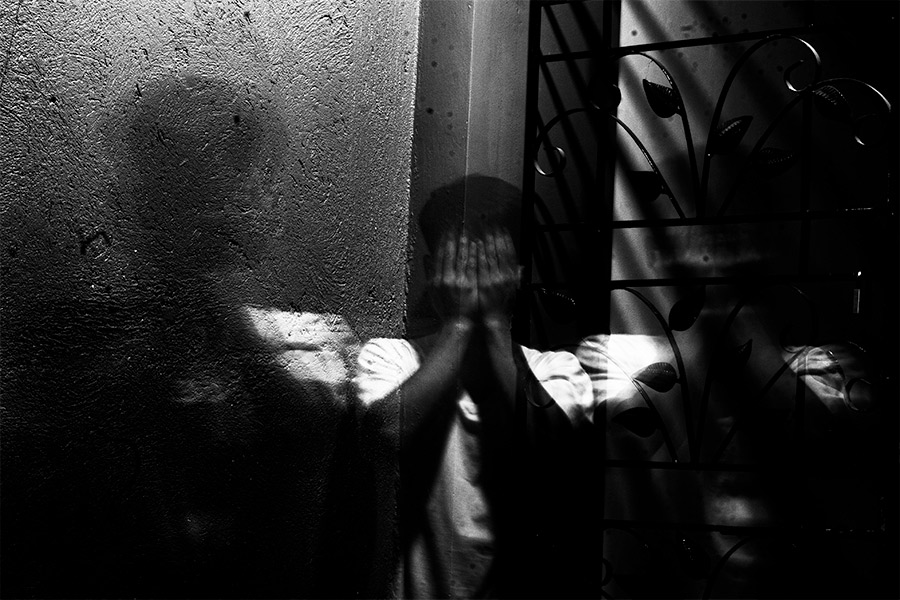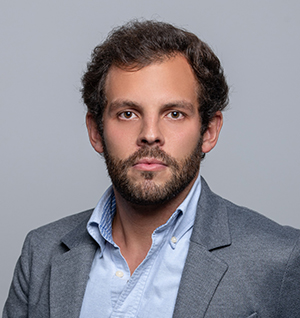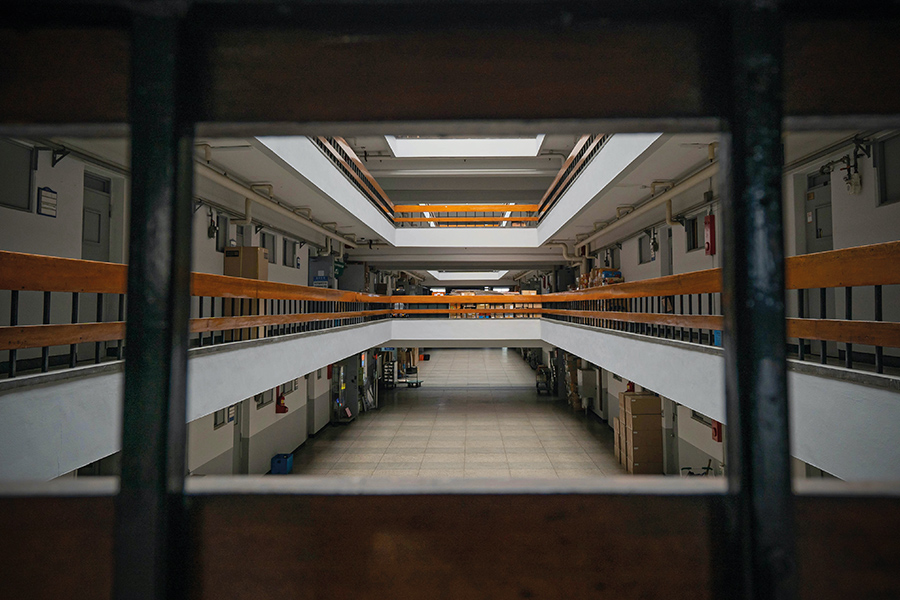Experts’ Panel: Response to Extremism
Pedro Liberado
It is estimated that (approximately) 11.5 million individuals are currently incarcerated worldwide (Penal Reform International, 2023). This marks an increase of over 20% in the last two decades, setting a world record for the highest incarceration rate to date.
Focusing on terrorism statistics (which could be the subject of a different article or discussion), and narrowing our view to the members of the Council of Europe, it is estimated that 28 507 individuals are serving prison sentences for terror-related crimes (Aebi et al., 2023).
This number is significantly influenced by the 27 654 individuals imprisoned in Turkey, so, any comparisons between continents/regions tend to be impaired by the (very) different policies and legislative practices of each country or jurisdiction. Nevertheless, irrespective of the numbers, radicalisation, violent extremism and, as a consequential outcome, terrorism, are characterised by their transnational nature. These issues transcend borders and are encompassed within the political agendas of countries.
Therefore, it is crucial to engage in transversal discussions about new threats, challenges, and opportunities to prevent the perpetuation of long-standing reactive practices and policies that only come into play once “the bomb goes off’ (cf. Neumann, 2008, p. 4). However, one could argue that the predominant focus continuous to be reactive.
In addition to the invaluable rehabilitation efforts – whether centred on cognitive distancing (i.e., deradicalisation) or behavioural cessation (i.e., disengagement) – implemented in several countries (e.g., Abrunhosa et al., 2020), the detection of (potentially) radicalised or extremist individuals is, unquestionably, rooted in security concerns focused on the aftermath (i.e., radicalisation has already occurred), rather than adopting a dual-focused approach involving pre-emptive efforts to identify individual vulnerabilities on the one hand, and providing necessary support (at various levels) on the other – thereby reducing the influence of some push and pull factors on an individual.
The landscape of extremism has changed dramatically compared to what we knew a decade, eight years or even five years ago. While it could be argued that Islamist-focused, securitised (and reactive) policies at the time may not have been the best approach, nowadays it’s evident that a more holistic and proactive approach should be the norm. Different challenges have emerged, but that is not necessarily a negative development.
Embracing new challenges as opportunities is a mindset that can foster innovative solutions. Without trying to (re)invent the wheel, this article proposes drawing attention to some contemporary issues, with the hope of stimulating critical discussions within the sphere of criminal justice.
Addressing the Impact of Conspiracy Narratives and Disinformation
The rise of conspiracy theories (e.g., QAnon, anti-vax, anti-5G, anti-technology) and disinformation (leading to an increased social polarisation) presents a growing threat to democracies, especially amidst global security vulnerabilities. These phenomena have become intertwined with major crises in Europe, such as the COVID-19 pandemic and Russia-Ukraine conflict.
Unsurprisingly, according to the European Union Barometer (EU, 2022) survey, over 60% of the respondents report exposure to disinformation or fake news, with many unable to discern the truth. This fosters hate speech, online radicalisation (Sampaio & Liberado, 2021) and threatens democracy.
Conspiracy narratives exploit individuals’ vulnerabilities, contributing to societal polarisation and animosity. As “conspiracy theories may be associated with violent behaviours and attitudes” (Vegetti & Littvay, 2022, p. 19), it is unsurprising that extremist (and terrorist) organisations (both from the left and right-wing, although mostly the latter) also intend to exploit this opportunity (EUROPOL, 2021, 2022, 2023).
In fact, the right-wing motivated attacks carried out in Germany (Hanau, Halle), New Zealand (Christchurch), and in the United States of America (El Paso, Pittsburgh, Poway) have perpetrators referencing conspiracy theories as part of their justifications (i.e., manifesto) (Rottweiller & Gill, 2022).
Right-wing groups, in particular, are capitalising on opportunities generated by the aforementioned societal traits, with the rise of the Siege culture and accelerationism theories (EUROPOL, 2023).
Siege culture is arguably the most extreme manifestation of fascism and national socialism to date, whose supporters are vehemently anti-democratic, anti-enlightenment, racist, espousing white supremacy, and believing that they belong to a superior (Aryan) group at the pinnacle of the racial hierarchy. They target non-whites, non-heterosexuals, Jews, and governmental institutions, who they believe to be against Siege’s interests (Lee, 2022).
Accelerationism supporters believe that individuals of white ethnicity are being threatened and systematically targeted, often through mechanisms such as immigration. Thus, it tends to focus on violent tactics (usually analogous to terrorist-related acts) to intensify social conflicts (Institute for Strategic Dialogue, 2022).
According to Lantian et al. (2020), individuals who believe in conspiracy theories tend to exhibit various traits such as heightened suspicion and mistrust, diminished self-esteem, alienation, neuroticism, narcissistic tendencies, and antagonistic behaviour, in addition to expressing discontent with or rejection of societal norms.
These beliefs can thrive in the criminal justice system, affecting inmates and those on probation due to their heightened vulnerabilities. Inmates have limited access to information sources, hindering their critical thinking and the ability to verify claims made by others, such as prison staff (incl. librarians and educators), external contacts (incl. family members), and other inmates (Canning & Buchanan, 2019), the three groups that inmates mostly rely on to solve their questions.
Consequently, prison staff should possess the skills to address disinformation and conspiracy theories among inmates. Effectively deconstructing certain ideas and providing accurate and reliable information is essential for increasing inmates’ scepticism and critical thinking when they encounter new information.
Challenges persist during probation and post-release, marked by reduced supervision and increased internet access. As a result, these individuals are especially vulnerable to polarising and divisive influences.
Probation and community organisations must be prepared to manage these issues during rehabilitation and reintegration.
Raising Awareness of Incel Culture and its Impact on Criminal Justice systems
Addressing incel-related consequences within the criminal justice system is essential. Increasing the understanding of this topic among prison and probation staff, through awareness-raising and training, is a proactive approach to counter this form of extremism.

Changing Approaches to Combat Disinformation amid Russia’s War on Ukraine
The initial reactions to Russia’s war against Ukraine, as observed in the early months of the conflict, were primarily within the realm of right-wing extremism (EUROPOL, 2023).
Despite the decline of Daesh in the Middle East, the issue of foreign fighters remains relevant to the EU (Kaunert et al., 2023). Saiz’s 2022 report states that approximately 20,000 individuals from 52 countries voluntarily fought in Ukraine since the conflict’s onset. While many had altruistic intentions, there is a noticeable, though limited (EUROPOL, 2023; Kaunert et al., 2023), presence of right-wing extremist groups among them, raising concerns among state authorities, given historical instances where foreign fighters have established transnational extremist networks capable of carrying out terrorist attacks (Saiz, 2022).
Russia’s war against Ukraine has become a focal point for extremist individuals and organisations, while shaping Western extremist narratives (Pantucci & Singam, 2023). Hence, it is argued that the far-right has capitalised on the conflict to promote propaganda and attract sympathisers, using it as a platform for individuals to acquire combat experience for future ideological skirmishes (Brzuszkiewicz, 2022).
However, it’s important to note that positions within the far-right realm are not unified, with some supporting the Ukrainian forces’ far-right components while others support Russia’s concerns (Enstad, 2018)1.
In this context, returning radicalised foreign fighters pose potential threats to their home countries. Addressing this issue requires a comprehensive approach involving all segments of society. Special attention should be given to justice professionals, as they bear significant responsibilities in upholding the rule of law and ensuring public safety.
Judicial actors must have a holistic understanding of the characteristics of far-right extremism and not assess its dangerousness disproportionately. Although national legislations recognise foreign fighting as a criminal act regardless of the destination, returnees from the Middle East (e.g., Syria) faced robust security-based response in their countries of origin (e.g., subjected to police raids and seizures, heavy surveillance, severe sentences, trials in absentia), whereas those returning from the previous Ukrainian (i.e., Crimea’s annexation and the partial seizure of the Donetsk and Luhansk regions by pro-Russian separatists) conflict usually remain exempt from prosecution and severe sentencing (despite fighting alongside pro-Russian separatists) (Belsin & Ignjatijevic, 2017). Nonetheless, it’s important not to overemphasize the scale of far-right foreign fighters in Ukraine, as it could align with Russian government interests.
Despite the limited numbers, it is in the EU and its Member States’ best interest to address the issue of far-right individuals traveling to Ukraine and include it on the policy agenda (Kaunert et al., 2023).



Enhancing P/CVE Practice Evaluation among Frontline Practitioners
Research reveals a significant disparity in how the evaluation of P/CVE (Preventing and Countering Violent Extremism) initiatives is conducted across different organisations and sectors, including the criminal justice system (Sarif & Raven, 2022).
This variation hinders practitioners from actively participating in the evaluation process, especially due to a lack of adequate training (Afonso & Neves, 2023). As a result, evaluation often becomes confused with risk management, risk assessment, and post-event debriefings, rather than being carried out in a systematic and professional manner (Sarif & Raven, 2022).
The absence of comprehensive evaluation is widespread and can be attributed to multiple factors, including political reluctance, resistance to change, limited knowledge, financial constraints, a lack of technical expertise, and the complexity of procedural requirements (Sarif & Raven, 2022). This lack of evaluation capacity is closely linked to insufficient training procedures, as the quality and rigour of an evaluation depend on the expertise of staff responsible for designing, implementing, and evaluating programmes and initiatives (Afonso & Neves, 2023).
In addition, Afonso and Neves (2023) have identified gaps in theoretical knowledge within the realms of P/CVE, a basic understanding of the evaluation process, and essential competencies and procedures, such as critical thinking, data analysis, and problem-solving. Inadequate intra- and inter-organisation cooperation mechanisms further compound the problem across various jurisdictions.
Regarding rehabilitation practices within the P/CVE framework, evaluation procedures are frequently unstructured, highly descriptive and reliant on anecdotal evidence and practitioners’ subjective perceptions of participants’ progress (Costa et al., 2021). This raises questions about the effectiveness of efforts with individuals who will soon be released from prison.
Even when P/CVE evaluation procedures exist, they are often marred by issues such as inadequate planning, mismanagement of expectations, ineffective communication, underutilisation of evaluation results, gender bias, politicisation, and methodological shortcomings (Sarif & Raven, 2022).
In conclusion, there is pressing need for criminal justice systems to change their evaluation culture (including improving induction and continuous training (Vicente, 2022). Otherwise, funds from governmental or other donors may continue to be spent without clear indications of the effectiveness of P/CVE initiatives, how to improve them, or how jurisdictions can adapt evidence-based practices that have proven to be effective.
1 Research has shown that Russia has observed right-wing violence much more than Western countries, emphasizing the convergence of an anocratic system of governance, high levels of violence, a significant immigration rate, and a minimal societal stigma surrounding extreme right-wing ideologies.
Exploring the link between Terrorism and Organised Crime
Assessing the Consequences of Imprisonment Policies on Islamist Extremism
Is there a unique regional characteristic, or do we observe transnational or continental similarities in response to extremism?
Let’s take a moment to reflect on this, as the challenges mentioned earlier can potentially be reshaped into opportunities for us to reconsider and reprioritise our endeavours.
Read the point of view of experts and decision-makers.
Acknowledgement
The author would like to express gratitude to IPS_Innovative Prison Systems colleagues (listed alphabetically) for their contributions to research projects that have been developed with consideration for the premises identified in various parts of this article: João Gomes, Leonardo Conde, Raquel Venâncio, Sara Afonso, and Vânia Sampaio.
References
Abrunhosa, C., Liberado, P., & Djouadi, C. (2020). Tailor-made exit programmes: Different approaches for different social and political realities. WayOut Project.
Aebi, M. F., Cocco, E., & Molnar, L., (2023). SPACE I – 2022 – Council of Europe Annual Penal Statistics: Prison populations. Council of Europe and University of Lausanne
Afonso, S., & Neves, P. (2023). Comprehensive Analysis Report on trainings, learning tools, gaps and needs for evaluation and initiatives’ design [Deliverable 5.1]. INDEED Project.
Beslin, J., & Ignjatijevic, M. (2017). Balkan foreign fighters: From Syria to Ukraine. European Union Institute for Security Studies.
Brace (2021). A Short Introduction to the Involuntary Celibate Sub-Culture. Centre for Research and Evidence on Security Threats.
Brzuszkiewicz, S. (2022) The war in Ukraine through far-right and jihadist lenses. European View, 21(2), 163-170.
Canning, C., & Buchanan, S. (2019). The information behaviours of maximum security prisoners: Insights into self-protective behaviours and unmet needs. Journal of Documentation, 75(2), 417-434.
Cherney, A. (2018). Supporting disengagement and reintegration: qualitative outcomes from a custody-based counter radicalisation intervention. Journal for Deradicalization, 17, 1-27.
Costa, V., Liberado, P., Esgalhado, G., Cunha, A. I., & das Neves, P. (2021). One size does not fit all: Exploring the characteristics of exit programmes in Europe. Journal for Deradicalization, 28, 1-38.
Council of Europe (2016). Council of Europe Handbook for Prison and Probation Services regarding radicalisation and violent extremism. Strasbourg: Council of Europe.
Enstad, J. (2018). Right-wing terrorism and violence in Putin’s Russia. Perspectives on Terrorism, 12(6), 89-103.
European Union [EU] (2022). Flash Eurobarometer: News & Media Survey 2022. European Union.
EUROPOL (2021). European Union Terrorism Situation and Trend Report. Publications Office of the European Union, Luxembourg
EUROPOL (2022). European Union Terrorism Situation and Trend Report. Publications Office of the European Union, Luxembourg
EUROPOL (2023). European Union Terrorism Situation and Trend Report. Publications Office of the European Union, Luxembourg
Halpin, M., & Maguire, F. (2023, June 11). Yes, the incel community has a sexism problem, but we can do something about it. The Conversation.
Hoffman, B., Ware, J. & Shapiro, E. (2020). Assessing the Threat of Incel Violence. Studies in Conflict & Terrorism, 43(7), 565–587.
Institute for Strategic Dialogue (2022). Accelerationism: An overview of extremist narratives about the need for societal collapse to preserve the white race. Institute for Strategic Dialogue.
Kaunert, C., MacKenzie, A., & Léonard, S. (2023). Far-right foreign fighters and Ukraine: A blind spot for the European Union?. New Journal of European Criminal Law, 20322844231164089.
Lantian, A., Wood, M., & Gjoneska, B. (2020). Personality traits, cognitive styles and worldviews associated with beliefs in conspiracy theories. In M. Butter and P. Knight, Routledge Handbook of Conspiracy Theories (pp. 155-167). Abingdon: Routledge.
Lee, B. (2022). What is Siege Culture?. Centre for Research and Evidence on Security Threats.
Marone, F. (2023). Notes from the Underground: Profiles and Mobilization Dynamics of Pro-Russia Western Fighters in the Donbas – Insights from Italy. Terrorism and Political Violence.
Neumann, P. (2008). Introduction. In P.R. Neumann, J. Stoil, & D. Esfandiary (Eds.), Perspectives on radicalisation and political violence: papers from The First International Conference on Radicalisation and Political Violence (pp. 2-7). London: International Centre for the Study of Radicalisation and Political Violence.
Pantucci, R., & Singam, K. (2023). Extreme Right in the West. Counter Terrorist Trends and Analyses, 15(1), 110-116.
Penal Reform International (2023). Global Prison Trends 2023. Penal Reform International.
Rottweiler, B., & Gill, P. (2022). Conspiracy beliefs and violent extremist intentions: The contingent effects of self-efficacy, self-control and law-related morality. Terrorism and Political Violence, 34(7), 1485-1504.
Sahar, A., & Raven, A. (2022). Baseline Report of Gaps, Needs and Solutions [Deliverable 2.6]. INDEED Project.
Saiz, G. (2022). Financing Extreme Right-Wing Volunteers in Ukraine: Past Lessons for New Risks? [Research Briefing No. 11]. Royal United Services Institute for Defence and Security Studies. Project CRAAFT.
Salman, S. (2023, March 14). The incel ideology and violence against women. The New Zealand Herald.
Sampaio, V., & Liberado, P. (2022). Disinformation as a catalyst for hate speech and online radicalisation: The need to enhance LEAs’ identification competencies. In M. Henriques & D. Castilhos (Eds.), Proceedings Book of the III Euro-American Conference for Human Rights Development: 2030 – Human Rights’ Dimensions in Response to COVID-19 (p. 112). Coimbra: JUSXII.
Stelloh, T. (2022, October 12). Ohio ‘incel’ who plotted to ‘slaughter’ women pleads guilty to attempted hate crime. NBC News.
Vegetti, F., & Littvay, L. (2022). Belief in conspiracy theories and attitudes toward political violence. Italian Political Science Review, 52(1), 18-32.
Vicente, A. (2022, July 18). Detecting early signs of radicalisation: An overview of European training. Presentation at the R4JUST Project International Conference “Preventing radicalisation and violent extremism in criminal justice settings”. Lisbon, Portugal.



Pedro Liberado
Pedro Liberado joined IPS_Innovative Prison Systems in
2018 and soon began coordinating the Radicalisation, Violent
Extremism, and Organised Crime Portfolio team. Two years later,
he was appointed Chief Research Officer and also became a
shareholder and member of the Managing Board on January 1st,
2022. Pedro holds a degree in Sociology from the University of
Coimbra, a master’s in Criminology from the University of Porto,
and is currently pursuing a PhD in Criminology at the University
of Granada.



